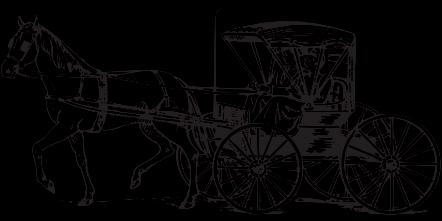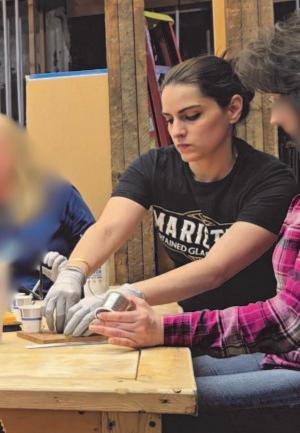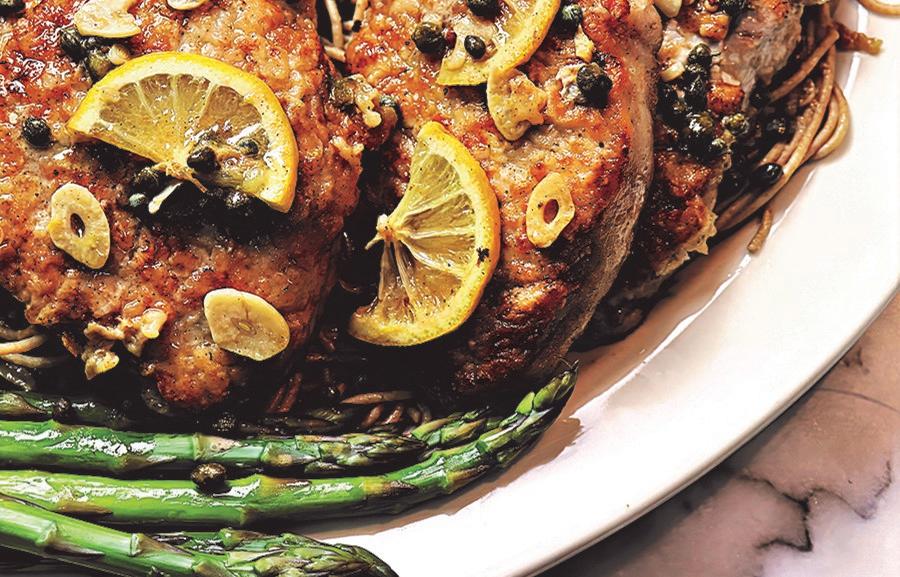




TIDBITS® BRINGS THE FACTS ON




by Kathy Wolfe
Join Tidbits in celebrating World Elephant Day on August 12 with these facts about the world’s largest land animals
• The word “elephant” has its origins in the Greek language, translating “ivory,” referring to the tusks of these majestic creatures.
• You may have heard of an elephant referred to as a pachyderm. This comes from the classification order of Pachydermata, which translates “thick skin.” The term isn’t just for elephants – the order also contains rhinoceroses, hippopotamuses, and tapirs. An elephant’s highly-sensitive skin, loaded with nerve endings, is more than an inch thick


• There are only three species of elephants –The African Savanna, the African Forest, and the Asian elephant. A male Savanna stands up to 10 feet (3 m) high, and weighs an average of 14,000 lbs. (6,350 kg). Males don’t reach their full size until they are 35 to 40 years old. The African Forest species live in the dense rainforests of western and central Africa. They’re a little smaller than their Savanna cousins. Asian elephants are even smaller, at about 9 feet (2.7 m) in height and weighing an average of between 6,000 and 8,000 lbs. (2,720 to 3,630 kg). The heaviest documented elephant weighed 26,000 lbs. (11,793 kg). turn the page for more!






















Of The Mid-Ohio Valley is Published & Distributed Weekly By: CindAl Publishing Company 812 55th St. Vienna, WV 26105 e-mail: alan@tidbitsmov.com Advertising: 304.210.3812
We reserve the absolute right to accept, reject, discontinue or refuse any advertisement personal or commercial that we deem may not be conducive for our publication or Tidbits®. The publisher does not assume any responsibility for the claims of its advertisers. Tidbits® is committed to remain a family oriented publication. www.tidbitsmov.com
• Oddly enough, the ears of African elephants are shaped much like the content of Africa, while the Asian elephants’ ears are shaped like the Indian subcontinent.
• Both male and female African elephants have tusks, but just the males in the Asian species do. It’s estimated that 30,000 elephants are killed every year for their tusks, with poaching accounting for 90% of all African elephant deaths. During the 1970s, that number was 100,000. The tusks can weigh up to 200 lbs. (90.7 kg) and reach lengths of 10 feet (3 m). They’re used for digging for water and roots, stripping bark off trees, and for defense from predators. During mating season, male elephants often battle with other elephants, establishing their authority with fellow males. Tusks grow about 7 inches (17 cm) a year, but because they are in regular use, they are ground down in order to prevent growth that could get in the way of movement. Most elephants have one tusk shorter than the other, because they have a dominant tusk that they favor, much like humans who are lefthanded or right-handed.
• The longest tusk on record measured 11.5 feet (3.5 m). The heaviest weighed nearly 264.5 lbs. (120 kg).
• An elephant’s trunk is a remarkable appendage. Also known as a proboscis, the trunk contains about 150,000 muscle units, and is likely the most sensitive organ found in any mammal. The trunk is used to suck up water to drink, able to hold up to 8.5 quarts (8 l) at a time. An elephant drinks up to170 quarts (160 l) a day. The trunk is also used as a snorkel when the elephant is swimming. Over 750 lbs. (340 kg) can be lifted by the elephant with its trunk. The trunk is also used as a “handshake” – elephants greet each other by twining their trunks together.


When you find him, please send us a message with your name, POSTAL MAIL address, the issue number you are referring to and which ad is hosting Toby for the week! Visit www.tidbitsmov.com or send the answer with the above information to alan@tidbitsmov.com OR you may send us a private message to our Facebook page - @Tidbits MOV. PLEASE do not post the answer directly to the page - that ruins the fun for everyone. All winners will be drawn randomly from correct responses and will be posted weekly. As with all our contests, you are welcome to play every week, you are only eligible for one winner per household per month.

















• Eating can take up to 75% of an elephant’s day. About 350 lbs. (150 kg) of food is consumed every day. They’re herbivores, dining on leaves, bark, and fruit of many different types of trees and shrubs. Contrary to what we’ve all been told, elephants don’t like peanuts!
• Since eating takes up so much of this animal’s day, an elephant only sleeps for 2 to 3 hours a day, usually standing up. That’s because it’s takes so much energy to heave itself up the next day.
• With an excellent sense of hearing, elephants can hear the call of another from 5 miles (8 km) away. But that’s just with their enormous ears. They can also “hear” up to 150 miles (241 km) with “underground messaging” through sensitive nerve endings in their feet, which detect vibrations in the ground. By stomping its feet, the animal can communicate warnings, mating calls, and greetings to other elephants. Their giant ears are capable of hearing sound waves far below a human’s hearing range, as the ears funnel sounds into the ear canal. Elephants’ ears are very sensitive to low-frequency sounds, as low as 9 Hz (the low end of the human range is typically 20 Hz). Elephants also have exceptional smell, but have small eyes and poor eyesight. Their average eye size of about 1.5 inches (3.8 cm) keeps them from locating anything beyond 20 feet (6.1 m). Their eyelashes can reach lengths of 5 inches (12.7 cm).
• A newborn elephant can weigh up to 260 lbs. (120 kg), yet it is able to stand within 20 minutes of birth and walk within an hour. Two days later, the baby is able to keep up with the herd. Babies are blind at birth, and depend on both their mother and their trunk for help during the first few days.










• Have you heard the saying “elephants never forget”? It’s probably true, since their brain’s temporal lobe, the area associated with memories, is larger and denser than that of humans. They are very intelligent animals with a brain weighing 11 lbs. (5 kg), with three times as many neurons as the human brain. It’s the largest brain of any land animal.
• It’s incredible that even with their size, elephants can run up to 25 miles per hour (40 km/hr). However, they are unable to jump or leave the ground, the only mammal with this characteristic.
• Mating season is anytime of the year. Elephants have the longest gestation period of all mammals, with the female carrying her baby between 18 and 22 months before giving birth. The female can bear offspring until she is nearly 50 years old, with a new one coming every 2.5 to 4 years.
• The average life span of an elephant living in the wild is 50 to 70 years, although elephants have been documented at 82 to 86 years old.
• If you see elephants in the circus, more than likely they are females. Males can be instinctively aggressive and females are easier to control.
• About 90% of African elephants have been killed in the last 100 years, mostly due to the ivory trade. An estimated 415,000 wild African elephants exist in the wild today. Just 50,000 Asian elephants remain. With a pair of male tusks weighing upwards of 200 lbs. (90 kg), with the price of black market ivory at about $1,500 a pound, poachers are killings thousands of elephants every year.

Piccata, that Italian restaurant classic, is a dish we all know and love. But what exactly is piccata? It's a cooking method where meat (often chicken, fish or pork) is tenderized, sauteed and served with a bright lemon, butter and caper sauce.
While many restaurant dishes seem complicated, this easy pork piccata proves that you can re-create the magic at home. Think tender, thin pork chops, lightly coated in seasoned flour, sauteed in butter and olive oil, and finished with a tangy, buttery sauce accented by lemon and capers.
Capers might be new to some of you. They're pickled flower buds, adding a briny pop to Mediterranean dishes. Look for them in the condiment aisle near pickles or olives, usually priced around $2.
No fresh lemons? Bottled lemon juice works just fine, especially when lemons are out of season. No white wine?
Simply use more chicken broth. And for a lighter version, you can easily substitute chicken breast for the pork.
Yield: 4 servings
Total Time: 40 minutes
4 boneless pork chops (about 1 1/2 pounds, 1 inch thick)
Zest and juice of 1 large lemon (or 3 tbsp lemon juice, divided)
1/2 cup all-purpose flour
1/2 teaspoon kosher salt
1/4 teaspoon black pepper


4 tablespoons butter, divided Splash of olive oil
2-3 cloves garlic, thinly sliced
1/4 cup dry white wine
1/2 cup chicken broth
1 tablespoon capers
Place each pork chop between two pieces of wax paper or in a large zip-top plastic bag. Use a meat mallet or rolling pin to gently pound the chops to about 1/2 inch thick. This helps to tenderize the meat, allowing it to cook quickly and evenly.
In a shallow bowl, pour 2 tablespoons of lemon juice. In a separate shallow dish (like a pie pan), mix the flour, salt and pepper. Dip each flattened pork chop in the lemon juice, allowing any excess to drip back into the bowl. Then dredge the chop in the seasoned flour, coating both sides. Shake off any excess flour and set the coated chops aside.
Heat 2 tablespoons of butter and a splash of olive oil in a large skillet over medium-high heat until sizzling. This will help the chops get a nice golden-brown crust. Add the pork chops to the skillet, working in batches if necessary to avoid overcrowding the pan. Cook for 3-4 minutes per side, turning once, until the chops are browned and cooked through (an internal temperature of 145 F). Remove the chops from the skillet and keep warm, covering them loosely with foil.
In the same skillet, add the sliced garlic and saute for about 20 seconds until fragrant be careful not to let it burn! Add the white wine and stir to scrape up any flavorful browned bits from the bottom of the pan. Let the wine cook down for about 3 minutes, reducing by half. Add the chicken broth, capers and the remaining 2 tablespoons of butter to the skillet. Stir until the butter is fully melted

and the sauce is smooth. Taste and adjust the seasoning with a pinch of salt or a squeeze of lemon juice if needed. Return the pork chops to the skillet and spoon the sauce over the chops, turning them to coat. Let everything simmer together for an extra minute, then serve with the sauce drizzled over the top. Serve with buttered thin spaghetti and asparagus. If asparagus is out of season, substitute steamed broccoli or sauteed spinach. Homemade piccata makes any day feel special. Enjoy! ***
Lifestyle expert Patti Diamond is the pennypinching, party-planning, recipe developer and content creator of the website Divas On A Dime Where Frugal, Meets Fabulous! Visit Patti at www.divasonadime.com and join the conversation on Facebook at DivasOnADimeDotCom. Email Patti at divapatti@divasonadime.com (c) 2025 King Features Synd., Inc.
Pork chops in a lemon-caper sauce an easy, restaurant-worthy dish made right at home.
PHOTO CREDIT: www.JasonCoblentz.com




















If you think you’ve heard of every weird sport, add extreme ironing to your list. This week, Tidbits investigates this bizarre outdoor sport invented in 1997.
• For most of us, extreme ironing means a pile of shirts to be ironed for the upcoming week, but for enthusiasts of this unusual sport, it means danger and thrills. It’s been advertised as “the latest danger sport that combines the thrills of an extreme outdoor activity with the satisfaction of a wellpressed shirt.” Simply put, it’s a sport where people “take ironing boards to remote locations and iron items of clothing.”
• In 1997, Leicester, England, resident Phil Shaw had just put in a hard day at a local factory, but had a long list of chores ahead, including a pile of ironing. Shaw really wanted to spend the evening enjoying his favorite hobby, rock climbing, and decided to combine the two activities into a new sport.
• Participants expanded the sport way beyond rock climbing, incorporating skiing, snowboarding, water skiing, scuba diving, running, canoeing, cycling, being tied to the back of a car, and even sky diving and parachuting. True daredevils engage in ironing while bungee jumping.
• The formation of the group “Extreme Ironing International” brought strict rules and regulations for the sport. Competitors must use an ironing board with legs that must be made of iron. Boards are required to be at least one meter (3.28 feet) long and 30 cm (11.8 inches) wide. Portable irons that do not need to be plugged in are used, but plastic irons are prohibited. Items to be ironed must be larger than a
towel. (continued page #7)














































(continued):
• The first official competition was held in Germany in 2002, with 80 teams competing. The contest was an obstacle course with participants ironing articles of clothing in several dangerous locales, including hanging from a tree, climbing a wall, and ironing under the hood of a car.
• The following year, a team from England ironed a United Kingdom Union Jack flag just above the Mt. Everest base camp, setting the world altitude record for the sport at 17,850 feet (5,440 m) above sea level.
• New Zealand resident Matthew Battley has climbed that country’s highest peak Mount Ruapehu to engage in the sport. Battley hauled his ironing board up this active volcano using a pulley mechanism. Once he reached the summit, Battley ironing a button -down shirt while battling 80 mph (129 km/ hr) winds and rocks hot enough to warm his iron on them.
• Extreme ironing is even done underwater! In 2009, a team of 86 divers ironed underwater for 10 minutes. The record was broken two years later when a group of 173 divers from the Netherlands did their pressing in an indoor swimming pool.
• In 2012, extreme ironing’s pioneer, Phil “Steam” Shaw came out of retirement to participate in the inaugural Extreme Ironing Half Marathon, wearing an ironing board, pressing garments along the route.
• You might think that scoring would be based on how dangerous the setting is, but 50% of the score is based on the quality of the ironing, incorporating how many wrinkles are left on the clothing and the speed of completing the pressing.
• The governing body of extreme ironing that promotes and regulates the sport is now the Extreme Ironing Bureau, a group with the nickname “Team Steam.”















Is crate training working for this hyper puppy?
DEAR PAW'S CORNER:
My best friend adopted a puppy a few months ago. Training seems to be going well: "Freya" gets regular walks, and she heels pretty well and responds when called. However, my friend uses a kennel crate, and whenever Freya acts up (which is pretty normal for puppies, right?) she puts her into the crate. I don't think crates should be used as punishment. What's your advice? Glen in Marietta, Georgia
DEAR GLEN: While you're correct that a crate shouldn't be used as punishment, crate training a puppy can get complicated sometimes. Those little guys are wriggly, fast and always a bit hyper. The line between "calm and relaxed" and "zooming around your ankles" is paper-thin. Before giving your friend advice about how to crate her dog, ask a tactful question or two. Like, "How do you know when it's time for Freya to go into her crate?" or, "Freya is so good at going into the crate on command. How did you accomplish that?" Owners are often willing to reply in detail about their training method, especially when it's working well. Signs that it's not going well are when both owner and pet seem stressed near the crate; when the dog is deeply reluctant to enter the crate, or even fearful. If the owner is yelling or yanking the dog's leash or collar, that's not a good sign; there's a bigger issue than the crate happening. Ideally, both owner and dog should be relaxed, calm and happy around the crate. That's a huge help in crate training, because Freya will associate the crate with those emotions (and treats). You could point your friend to the AKC's page on crate training: www.akc.org/expertadvice/training/how-to-crate-train-yourdog-in-9-easy-steps.
Send your tips, comments or questions to ask@pawscorner.com.
(c) 2025 King Features Synd., Inc.


* "Every member of our family has a plastic bin in his/her closet to hold items not currently in use. For the littler ones, it's handme-downs that are not quite ready for use. For my husband and myself, it is out of season items. And for everyone, there is a bin in the garage where we place usable items that no longer fit. Whenever it's full, we either donate it or start planning our next tag sale." A.E. in Massachusetts

* Here's an oldie but a goodie! Iced coffee is at its best when brewed with twice the usual amount of ground coffee, because the coffee is diluted by the (melting) ice cubes. Or use regular-strength brewed ice coffee and serve over coffee ice cubes. They're easy to prepare: Pour cool brewed coffee into ice-cube trays and freeze.
* "If you have to talk to someone at the cable company, call on a Thursday (unless it's urgent), as that's the day they tend to have the fastest response times, experts say." J.C. in Florida
* If you have lost a zipper pull, you can create a temporary one with a paperclip.
* You can use a salad spinner to gently "wring out" delicate hand washables. Remove excess water, and then hang dry or lay flat according to the garment's instruction.

* Clear bins make it easy to group like items in your pantry. You can remove the bin, get what you need and replace it rather than digging through cans and boxes on a shelf and having to straighten it back up when you're done.
Send your tips to Now Here's a Tip, 628 Virginia Drive, Orlando, FL 32803.
(c) 2025 King Features Synd., Inc.




If you Love Your Tidbits Patronize Our Advertisers! They Paid for Your Free Tidbits®!


